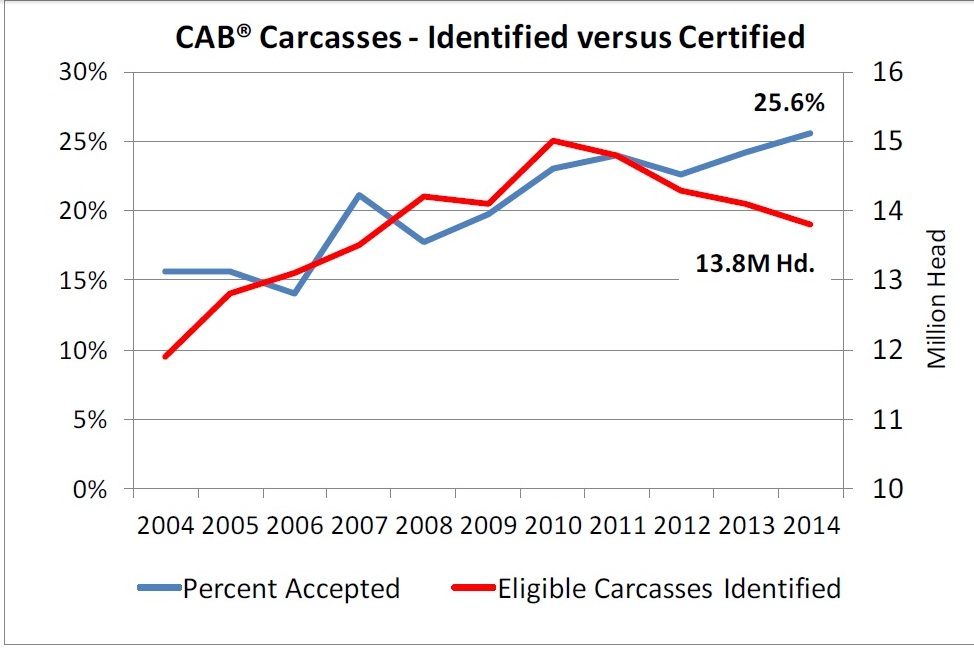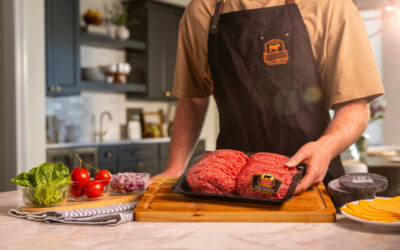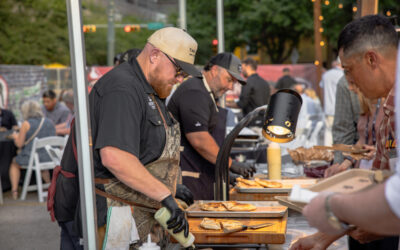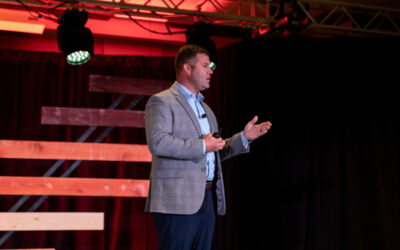
Every story has a number: 1%
One goal.
We wanted you to learn more about high-quality beef production. Not because we (obviously) love this brand, but because it matters to you.
You may or may not intentionally produce cattle for Certified Angus Beef ® brand, but it impacts you either way.
I’m not trying to sound self-important here, but I’ve talked to people all along the beef chain who will tell you that the brand has changed things; how cattle are marketed and valued, what consumers look for in beef, and on and on.
Sure it’s easy to see how calf health or genetic decisions or salebarn premiums directly make a difference to your bottom line. But what about all these numbers that matter to us? Do they matter to you?
What does a 1% increase in our CAB acceptance rate (or the percentage of cattle evaluated for our brand that earn the stamp) mean?
The numbers do the talking: 130,000 more cattle, or 33 million pounds of product. That’s enough to supply 500 new licensed grocery stores.
“Good for you,” says the skeptic, “But doesn’t that mean fewer premiums for me?”
Simple supply-and-demand theory might suggest that, but we have proof to the contrary.
The premiums for CAB over Choice have actually grown with increasing CAB sales, and we have the data to prove it.
For example, when talking about a 2014 demand index that showed the CAB demand is up 129% in 12 years, Kansas State University economist Ted Schroeder noted grid and formula premiums for CAB-qualifying cattle were “up by more than 35%” compared to 2010-11.

When chatting with Mark McCully about this last week, he said it better than I could have myself:
“It’s an interesting twist on supply and demand. In our case, you could argue that supply can actually create demand. With increased availability, retailers are able to do large promotions and cover aggressive ad features and the brand is able to increase distribution both in the U.S. and around the world. As a result, more consumers are given access to the brand….which results in demand.
“Those simple supply and demand concepts apply nicely to the widget industry, but maybe not as perfectly to premium beef.”
We’re in a unique position. We get to see how menu labeling makes a difference to cattlemen. We get to foster young beef community leaders. We know that fat thickness matters to bottom lines. We are certainly not producing widgets, but rather individual eating experiences, and we love it when you see it that way, too.
Any of these numbers inspire you to learn more? Leave us a comment or drop us a line. Or, feel free to check out any of our resources on our website. There’s plenty of information to help you do an even better job pleasing consumers (and earn more money doing it), one step at a time.
May your bottom line be filled with black ink,
Miranda
You may also like
Success, Despite Challenges
Today’s market is complex and competitive. The collective effort of stakeholders across the supply chain positions Certified Angus Beef to meet the record demand for premium beef moving forward. Signals across the beef industry are clear and Angus farmers and ranchers seeking high-quality genetics that deliver premium beef are producing a product in high demand.
Keep the Supply Coming
A record-high 800 registrants from 17 countries gathered in Austin, Texas, to learn more about CAB, become inspired by the culinary work of chefs and pitmasters, and celebrate sales and production success. But at the forefront: supply and demand, a reflection of the chaotic past year, and preparing for what’s ahead.
Consumer Demand, Power of Quality
Demand for high-quality beef persists. But with that demand comes challenges. From tight cattle supplies to higher costs and increasing pressure on retailers to deliver a consistent eating experience, the pressure is on. David O’Diam, CAB VP of retail, addressed the current retail beef environment, highlighting both opportunities and challenges in today’s marketplace.



